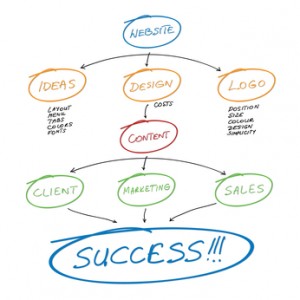Essential Steps for Web Designing
The design of your website is the key to its success or failure. Gone are the days of wholesale website designs where every other website looked and behaved similarly. Today, business demands the website to be customised to suit the needs and purpose of the specific company. A website serves several objectives, from being the first impression of a business to driving online conversations but the user experience determines if customers are going to return to your site again.
To create a smooth and sleek user interface, we need to keep certain points in mind when designing a website. Let’s take a look at the steps involved in web designing.
- Gathering Information : The most important part of your website is the content. Sure, you can attract visitors with an eye-catching design but no one will go beyond your homepage if you have nothing meaningful to say. Taking the purpose of the business, the goals, and the target audience into consideration is essential for creating winning web content.
- Planning : From the information gathered above, a site map is made, listing all topics and subtopics on the website. This is an important step to create a smooth, consistent navigation system and to understand if technologies like interactive forms, WordPress, and CMS should be applied.
- Design : Implementing the information collected above, the look and feel of the website is determined. Target audience is the key factor in determining the site design. A website aimed at young-adults will need to be designed differently than the one meant for an educational institution. Company logo, signature colours, and any other identifiable feature of the business are incorporated into the design.
- Development : In this step, all individual graphic elements are brought together to create a functional website. The images, logos, content and everything else is taken and distributed throughout the site in appropriate places.
- Testing and delivery : Here, the files are uploaded to the server and essential plug-ins are installed and configured in order to enhance the site. It is important to test if the files have been uploaded correctly before launching the website.
- Maintenance : The development of your website is an ongoing process, even after the site has been launched. Maintaining the site and constantly updating it with new information and features is important for bringing back visitors and converting them into paying customers. Things change, and keeping yourself abreast with the latest changes and developments is essential for a successful website.
Your business website is your company’s first impression to the world. Putting in time, effort and care to design a well thought-out website will make your online presence stronger and help your business on the way to success.


